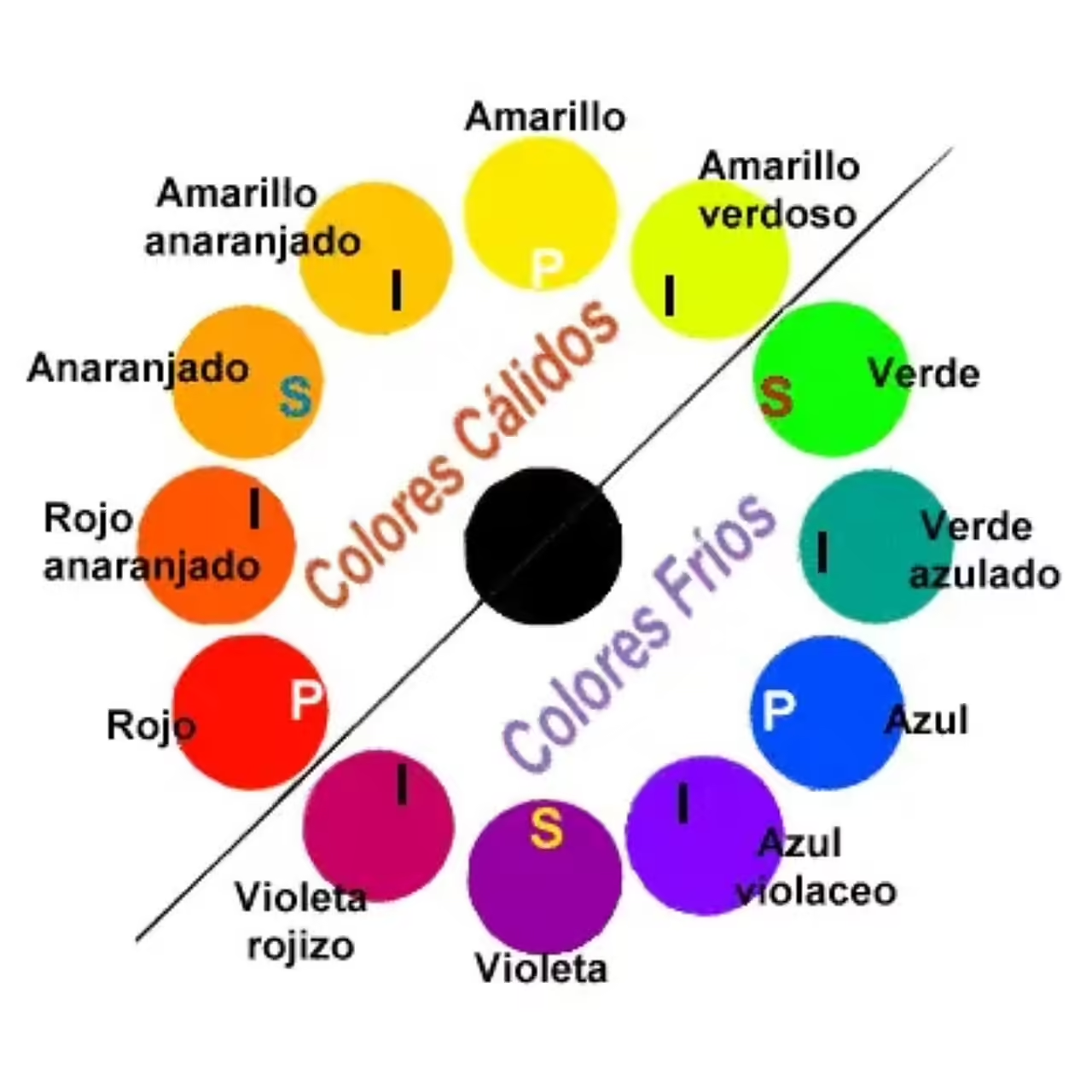The world of art and painting is absolutely fascinating and allows us to play with a wide variety of colors in different arts and techniques, whether with oil, watercolor, etc. And for this purpose, primary, secondary, intermediate colors, etc. are used.
Yellow, blue and red: the Colors of creation
To understand it in a simpler way we must first clarify that everything, which are the primary colors: yellow, blue and red. When these are mixed the secondary colors arise, as well: yellow with blue: green, yellow with red: orange, and blue with red: violet or purple.
However, they are called intermediate colors to those that are obtained from the mixture in equal proportions of the secondary colors, and that in the image they are marked with the letter I. These are: yellow-greenish, red-orange, blue-greenish, blue-violet, red-violet and yellow-orange.
These colors, in turn give many more shades, especially when they are combined with the colors black and white, giving rise to an absolutely diverse range of shades and colors, between it tones pastels and earth tones.
Biology and the Mysteries of perception
A primary color is listed as such, because its tonality is not achieved by the combination of any color. This definition has been given by science, based on the biological characteristics of the receptive cellular system of a person’s eye, against the action of some light frequencies and their interference.
In essence, the white-tone light is a permanent spectrum of wavelengths, which implies the existence of an impressive number of colors, but that the human eye cannot perceive in its majority. The human eye presents three types of receptors, which were called the cones: L, M and S, corresponding to the red, green and blue wavelengths.







